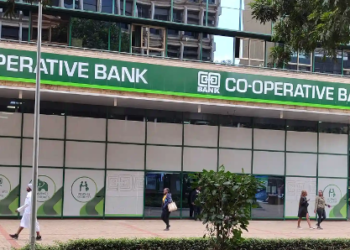Private equity and private credit have, for more than a decade, been sold as the sophisticated corner of Kenya’s investment landscape, a place where capital is patient, volatility is muted, and returns are superior to what is available in public markets. For pension funds seeking alternatives to equities and fixed income, and for DFIs eager to catalyze private sector growth, the asset class seemed almost purpose-built. The reports were smooth, the valuations reassuring, and the narrative persistent: while the NSE swung with politics and global shocks, private markets were portrayed as stable, resilient, and quietly compounding value in the background.
But the calm image was in large part an artefact of how private assets are valued rather than a reflection of true performance. The underlying businesses in many Kenyan PE and PC portfolios were not insulated from economic cycles; they simply lacked the real-time mark-to-market discipline of listed securities. Slowing household consumption, rising operating costs, currency depreciation, and a high-interest-rate environment hit private companies just as hard, in some cases harder, than their publicly listed peers. Yet valuations often moved only marginally, giving the impression of stability at a time when earnings and cash flows were deteriorating.
The model worked in the early years because conditions favored it. In the mid-2000s and early 2010s, PE firms in Kenya could acquire companies at relatively low multiples, often partnering with family-owned businesses that genuinely benefited from governance reforms, professionalization, and access to growth capital. The macroeconomic environment was supportive, credit was cheap, and competition for deals was limited. Just as in the early era of US private equity, value creation came largely from buying well, applying moderate leverage, and riding an economic upswing.
As the industry grew, however, competition increased and valuations rose. More funds chased the same pool of mid-sized assets, driving up entry prices while simultaneously compressing potential returns. Meanwhile, the illusion of low volatility made private equity even more attractive to institutional investors, who allocated more capital based on reported performance that seemed superior to the volatile outcomes of public markets. Private credit followed a similar path: marketed as a steady income generator with high yields and low default risk, it expanded rapidly even though the borrowing companies often had thin margins, weak cash flows, and limited capacity to withstand economic shocks.
The turning point came when Kenya’s macroeconomic environment shifted. Interest rates rose sharply, currency depreciation accelerated, and refinancing became more difficult. The very leverage structures that once amplified returns started to work in reverse. Portfolio companies that had relied on optimistic growth assumptions suddenly faced higher debt-service burdens, shrinking demand, and tougher operating conditions. Exits slowed dramatically, IPOs disappeared from the region, and secondary sales became harder as global LPs turned cautious. Funds that had previously marked their holdings upward now struggled to justify valuations that no longer aligned with economic reality.
The current moment is thus one of quiet but significant repricing. The promised smoothness of private returns is being challenged by actual cash-flow performance; limited partners are asking harder questions; and the industry is confronting the reality that reported stability was often a function of subjective valuation models rather than true insulation from risk. Kenya’s PE and PC landscape is not collapsing, but it is normalizing, becoming more transparent, more cyclical, and more aligned with the fundamental economics of the businesses it finances.
This correction is healthy in the long run. It forces the market to distinguish genuine value creation from valuation engineering, rewards firms with operational expertise over those that merely relied on leverage, and encourages investors to treat private markets with the same analytical discipline applied to public ones. But in the near term, it exposes how an asset class marketed as an oasis of stability was, in reality, far more sensitive to Kenya’s economic cycle than its smooth return profiles ever suggested.
















